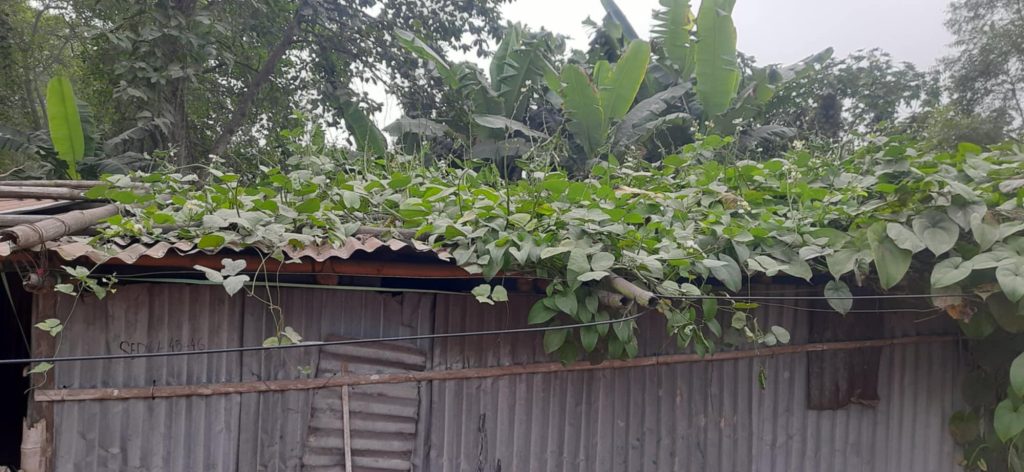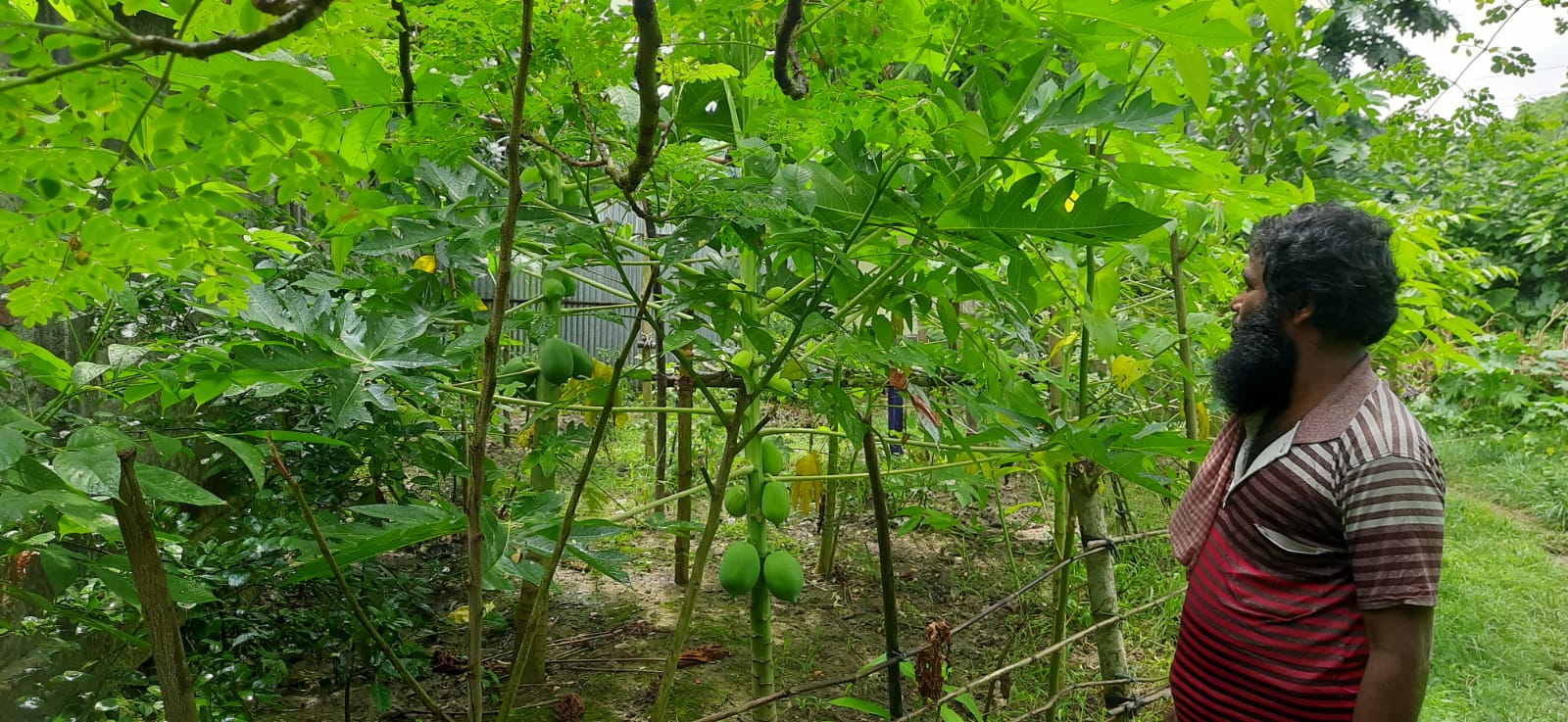By Amit Sarkar, from Rajshahi
In Budhpara Slum, Ward 30 of Rajshahi city, Md. Omar Ali, now in his forties, has lived for nearly two decades in a tiny tin-roofed house by the railway line. A lifelong day laborer, he has turned his small plot into a green, climate-resilient urban farm through determination and learning.

His wife, Tuli Begum, is a housewife, while his elderly mother, Surjo Begum, survives by begging. Their family once faced extreme poverty and uncertainty. But things began to change when BARCIK, started working in the slum in 2022. They introduced ideas of urban agriculture to help the urban poor adapt to climate change.
Once Omar participated in BARCIK’s meetings and training, and began growing vegetables beside his home. Starting with a single bottle gourd and chili plant, he expanded to beans, taro, eggplant, papaya, Malabar spinach, yam, ginger, and more. The harvest now meets much of his family’s needs and even provides a small income. Last winter he earned some cash just from selling Malabar spinach.
He’s also had success growing ginger in sacks, harvesting 1.2 kilograms from one sack, and is expanding to 50 sacks with BARCIK’s support. He’s experimenting with Tulsi, dragon fruit, medicinal plants, and even plans grapevines, making the most of his limited space.

“Following to BARCIK’s advice got me started,” Omar says. “Now many here grow vegetables next to their houses like I do. I am always learning new ways to get more from less space.”
Omar Ali’s story is not just about one man but it shows how urban agriculture can help poor city dwellers adapt to climate change, ensure food security, and generate income. Such effort does not just transform families but also they point to a sustainable future for cities facing rising heat, food insecurity, pollution, and shrinking green space.
This small green shapes in Budhpara Slum offers a glimpse of an alternative path for urban resilience.

